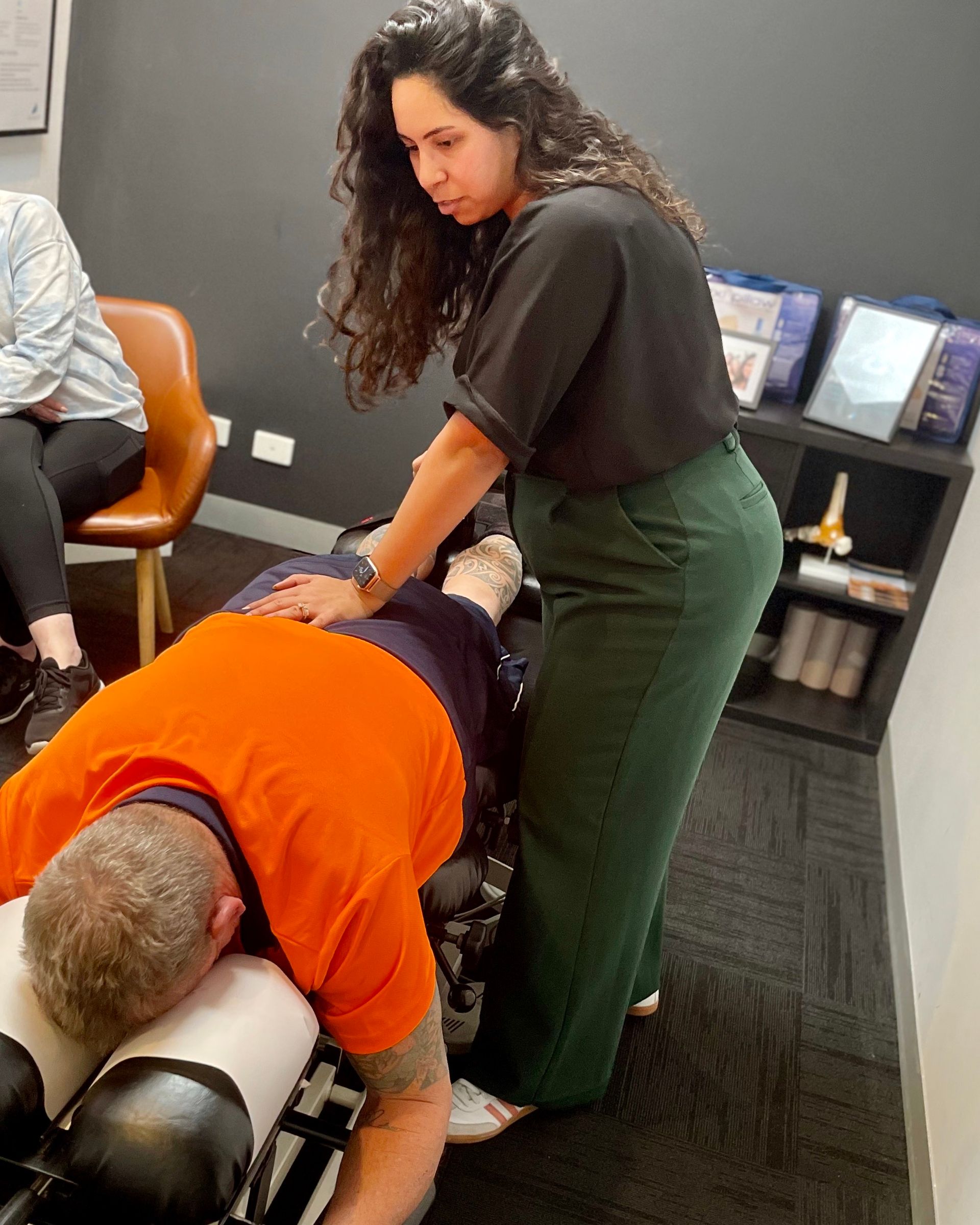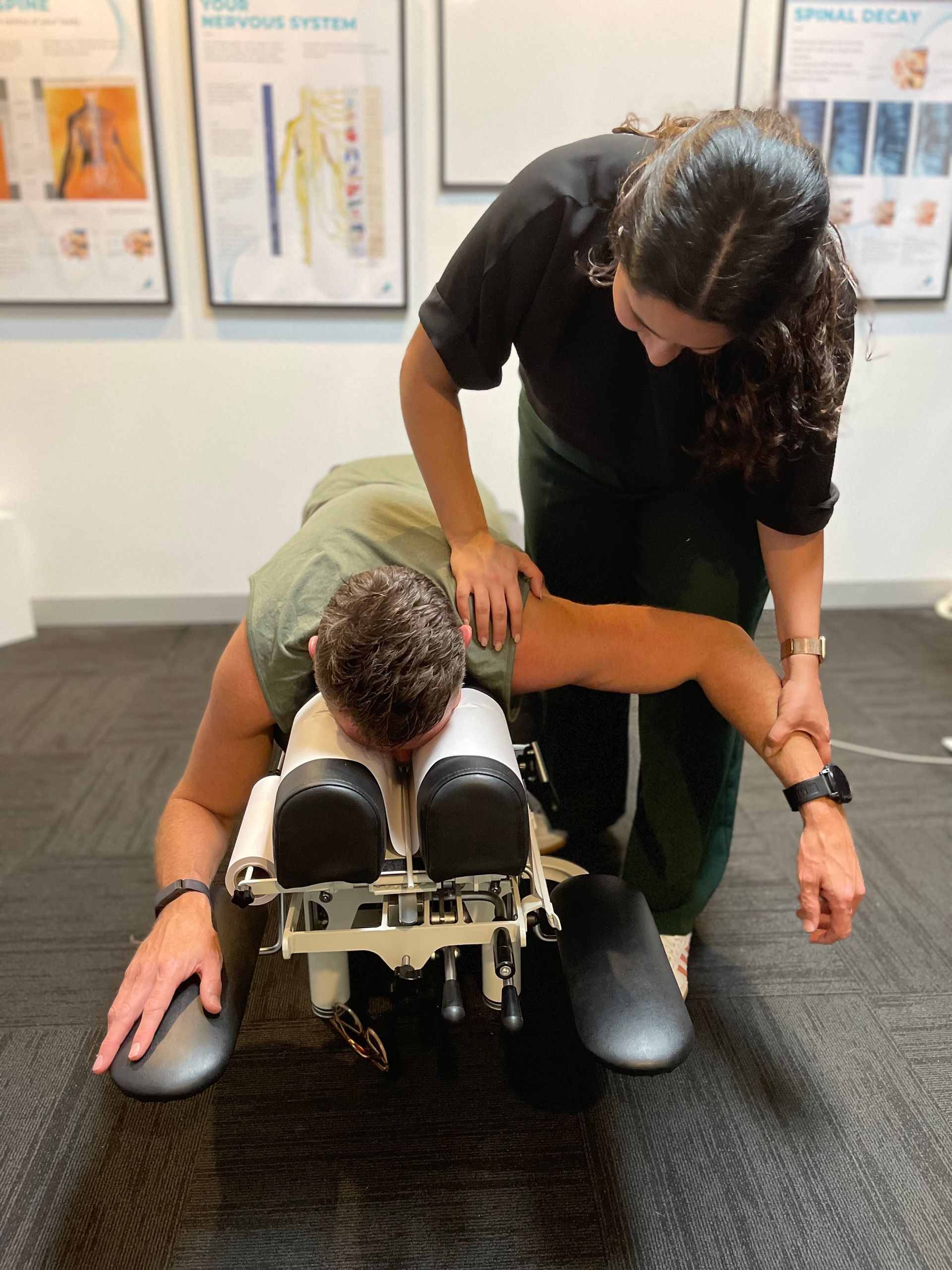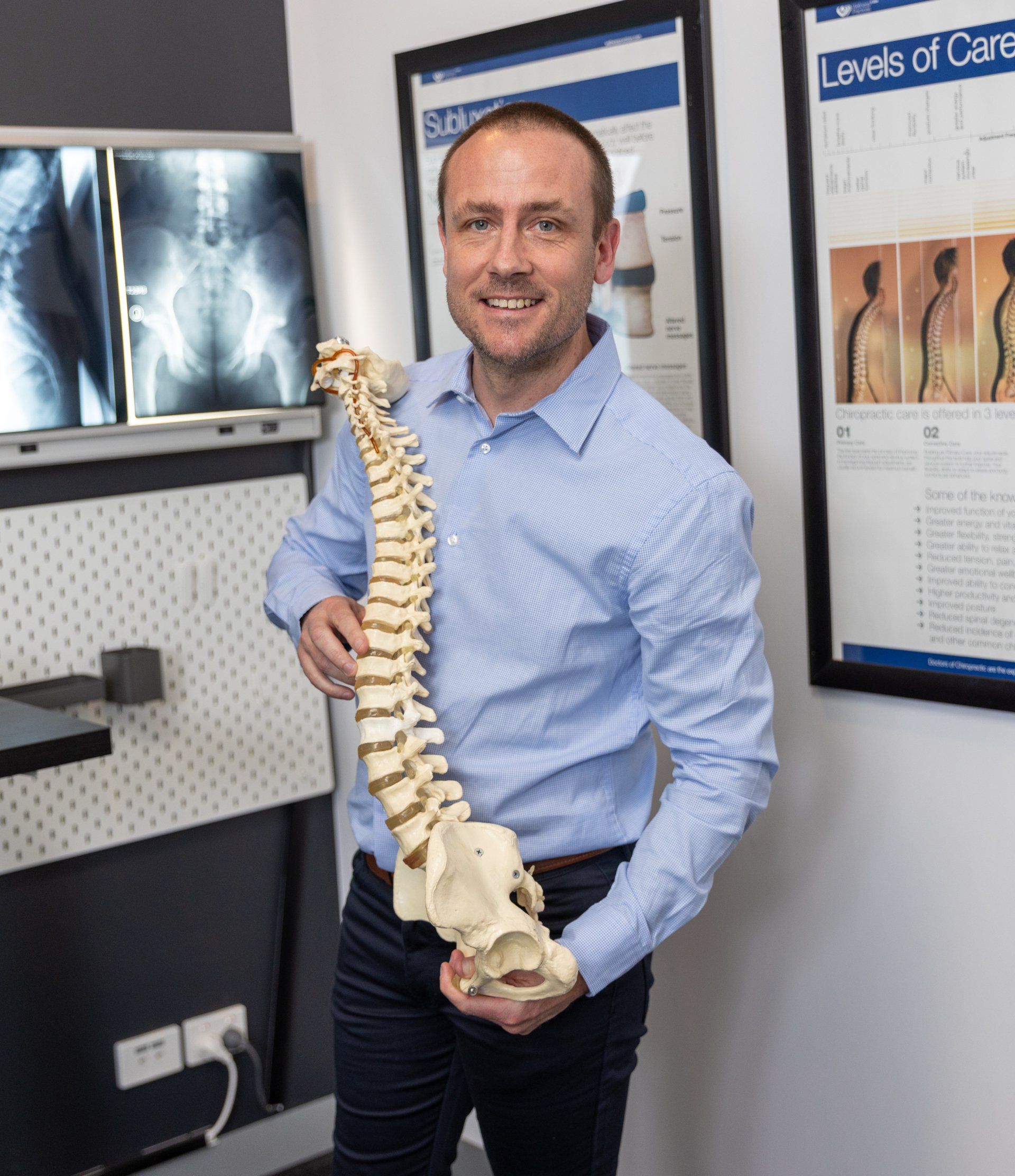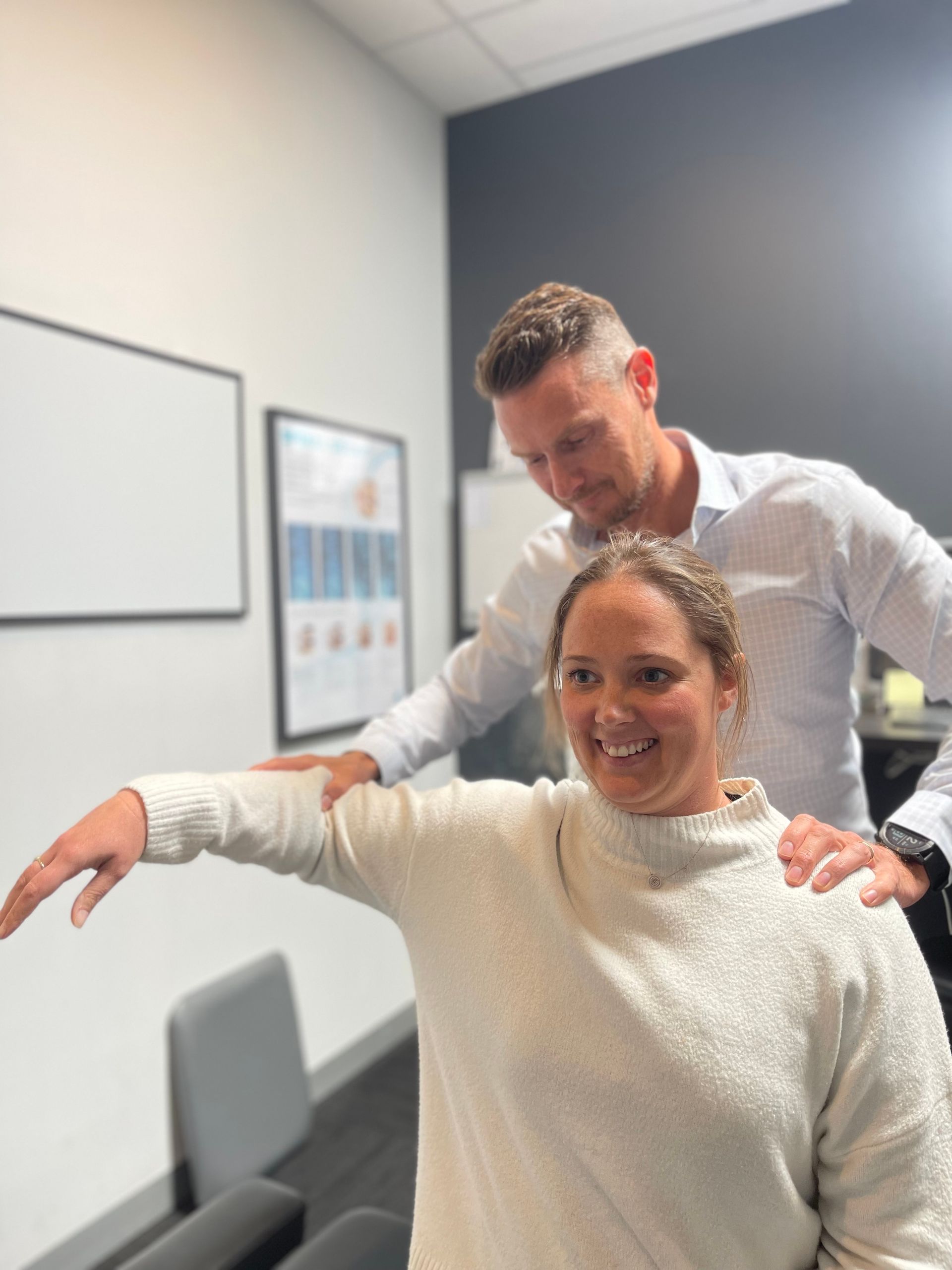Should I See A Physio Or Osteopath For Back Pain
When it comes to back pain, finding the right treatment can be a daunting task. With so many options available, it's important to consider which healthcare professional is best suited to address your specific needs. Should I see a physio or osteopath for back pain?
In this article, I will explore the differences between physiotherapists and osteopaths, and help you make an informed decision on whether you should see a physio or osteopath for your back pain.
As someone who has experienced the frustration of living with chronic back pain, I understand the desire for innovative solutions that can provide relief and improve quality of life. Both physiotherapy and osteopathy offer effective treatments for back pain, but they approach it from different angles. By understanding their unique techniques and the conditions they treat, we can better determine which option may be most beneficial.
So let's dive in and explore the world of physios and osteos, uncovering the innovative approaches they bring to the table when it comes to alleviating back pain.
Should I See A Physio Or Osteopath
If you need a musculoskeletal specialist, see a physiotherapist or osteopath. Physiotherapists and osteopaths are skilled at treating back pain and other pain. They treat you differently but aim to relieve your pain and improve your health.
Physiotherapists specialize in movement and function. They manage and treat pain with manual therapy, exercise prescriptions, and education. They restore optimal movement patterns and strengthen affected areas to reduce pain and improve function. Physical therapists also consider posture, ergonomics, and lifestyle habits that may cause back pain.
Osteopaths treat holistically. They believe the body can heal itself under certain conditions. Osteopaths restore body balance with joint mobilization and manipulation. They reduce pain and promote healing by correcting muscle, joint, and connective tissue imbalances.
Whether you see a physiotherapist or osteopath for back pain depends on your preferences and treatment style. Osteopaths are more holistic than physiotherapists, who emphasize movement. Both professions can treat back pain well.
Physiotherapists Vs Osteopaths

You may be wondering if a physiotherapist or osteopath is best for spine pain.
Both professionals treat back pain well, but from different angles. Physiotherapists learn to optimize movement and function through exercise and interventions. However, an osteopath uses manual therapy to restore balance and alignment by considering the whole body.
Physiotherapists are experts at inspecting movement patterns for imbalances and dysfunctions that may cause back pain. Your physiotherapist will design an exercise program to improve flexibility, strength, and posture. They may relieve muscle tension with massage or ultrasound therapy in addition to exercises. Physiotherapy educates patients and teaches them how to manage their symptoms.
Osteopaths treat back pain hands-on. Musculoskeletal imbalances can cause body pain and dysfunction, they say. Osteopaths use soft tissue manipulation, joint mobilization, and spinal manipulation to restore body balance. They treat pain at its source and its underlying causes throughout the body.
Difference In Techniques
Learn unique techniques to relieve and rejuvenate your aching body. Osteopathy and physiotherapy treat back pain well. However, their methods differ in important ways, which you should consider when choosing a treatment.
Osteopathy emphasizes the body's natural healing ability. Osteopaths consider the whole body when treating pain. They use manual manipulation, stretching, and massage to restore musculoskeletal balance and mobility. These gentle but effective methods can relieve back pain by targeting its causes.
Physiotherapy emphasizes exercise-based rehabilitation. Physiotherapists strengthen weak muscles, improve flexibility, and correct posture with targeted exercises. They may also use ultrasounds or electrical stimulation to relieve pain. Physiotherapy uses personalized exercise programs to treat back pain's causes and symptoms.
These differences in techniques are crucial when choosing osteopathy or physiotherapy for back pain. Both methods have benefits, but your choice should depend on what works for you and your condition.
Conditions Treated

Discover the many conditions that osteopathy and physiotherapy can treat.
Osteopaths and physiotherapists treat back pain well. Their expertise can help with three common conditions:
- Herniated discs: A herniated disc occurs when the soft inner material of a spinal disc pushes through a crack in the tough outer layer. This condition often causes intense pain, as well as numbness or weakness in the affected area. Both osteopaths and physiotherapists can provide targeted exercises and manual techniques to alleviate symptoms and promote healing.
- Muscle strains: Back muscles can easily become strained due to heavy lifting, sudden movements, or poor posture. Osteopaths take a holistic approach to treatment by addressing not only the strained muscle itself but also any underlying imbalances or dysfunctions that may have contributed to the injury. Physiotherapists typically focus on specific exercises and therapies to strengthen the affected muscles and improve flexibility.
- Scoliosis: Scoliosis is an abnormal curvature of the spine that can cause back pain, limited mobility, and even breathing difficulties in severe cases. Osteopaths use gentle manipulations, stretching techniques, and exercises to help correct spinal alignment and reduce discomfort. Physiotherapists may employ specialized exercises, postural training, or bracing techniques depending on the severity of scoliosis.
Both osteopaths and physiotherapists can treat back pain from herniated discs, muscle strains, and scoliosis. Each profession addresses musculoskeletal issues differently.
For a complete back pain diagnosis, see a physical therapist. They will then create a customized treatment plan that may include manual therapy, exercises, and heat or cold therapy.
Physical therapists can also teach you proper body mechanics and lifestyle changes to prevent back pain. Physical therapists can help you manage and relieve back pain for long-term relief and a better quality of life.
Back Pain Treatment
Physiotherapists can provide personalized care and lifestyle changes for long-term pain relief. Physiotherapists diagnose and treat back pain and other musculoskeletal conditions. They treat the root causes of your pain and restore function using various methods.
Physiotherapists use manual therapy to treat back pain. Hands-on joint mobilizations, soft tissue massage, and stretching exercises improve mobility and reduce muscle tension. The goal is to restore spine alignment and movement patterns to relieve pain and improve function.
Physiotherapists may use manual and other methods in your treatment plan. Therapeutic exercises to strengthen spine-supporting muscles, posture correction, and ergonomics education may be included. Physiotherapy addresses these factors to relieve back pain and prevent future episodes.
Manipulation Techniques

Back pain treatment has many options. Physiotherapists and osteopaths can treat back pain using manipulation.
Stretching, mobilizing, and manipulating the spine and surrounding tissues requires hands-on techniques. As a back pain sufferer, I know how important treatment is.
When choosing a physiotherapist or osteopath for back pain, remember that each has their own manipulation techniques. Physiotherapists diagnose and treat many musculoskeletal conditions, including back pain. Joint mobilization and soft tissue massage are evidence-based methods they use to relieve pain and improve movement.
However, osteopaths use manual therapy to treat the whole body rather than just symptoms. They believe restoring body balance will help it heal itself. Osteopaths may use spinal manipulation or craniosacral therapy to treat back pain and underlying imbalances.
Physiotherapists and osteopaths treat back pain using manipulation techniques. Your preferences and needs determine whether you see a physiotherapist or osteopath. Consider their expertise, treatment approach, and recommendations from healthcare professionals or friends with back pain treatment experience.
When To Visit A Physio
Find the right time to see a physiotherapist for back pain. When choosing an osteopath or physiotherapist for back pain, consider your experience and treatment goals.
Physiotherapists receive extensive training in treating musculoskeletal conditions like back pain. They relieve your pain with exercise, manual, and educational methods.
Seeing only a physiotherapist may be best for optimal results and a holistic approach to back pain management. In addition to treating symptoms, physiotherapists also identify and treat the root causes of pain. They'll customize a treatment plan with strength and flexibility exercises and posture correction.
Physiotherapists use deep tissue massage. This technique relieves muscle and connective tissue tension, reduces inflammation, and improves blood flow. Physiotherapists target back pain-causing areas to relieve muscle tightness and restore function.
Visit a physiotherapist for a complete back pain treatment. Their musculoskeletal expertise and targeted treatments, like deep tissue massage, can speed up recovery.
When To Visit An Osteopath

Are you fed up with pain and looking for a new solution? If so, you may be wondering if an osteopath can help with your back pain. Well, let me explain why it may be best.
- Experience matters: When it comes to treating back pain, seeing an osteopath who has experience specifically dealing with this condition is optimal. Osteopaths are trained in a holistic approach that focuses on the musculoskeletal system. They have a deep understanding of how the body works and can provide targeted treatments to alleviate your pain.
- A fresh perspective: Sometimes, when we've been dealing with chronic pain for a long time, it's easy to get stuck in our ways and believe that nothing will work. By seeking out an osteopath, you're embracing innovation and opening yourself up to new possibilities. Osteopaths often have unique techniques and approaches that can offer a fresh perspective on your condition.
- Don't limit yourself: While physiotherapists are also skilled professionals who can help with back pain, there's no need to see just a physio. Exploring different options can lead to better outcomes. By considering an osteopath, you're expanding your choices and increasing your chances of finding the best treatment plan for you.
Injury Management
Ready to manage your pain and find lasting relief? Let's discuss injury management.
Physiotherapists and osteopaths specialize in injury management, helping people recover from injuries, reduce pain, and improve function. Whether you see one depends on your preferences and your condition.
For more structured rehabilitation, physiotherapists use exercise therapy, manual therapy, and electrotherapy to treat back pain and other musculoskeletal issues. They also teach patients how to prevent future injuries or flare-ups.
Osteopaths use manual techniques like joint mobilization, soft tissue manipulation, and stretching to restore balance and relieve tension in the body. They also assess posture, lifestyle habits, and emotional well-being that may contribute to back pain or musculoskeletal conditions.
Injury management is essential for treating back pain and musculoskeletal conditions. Physiotherapists and osteopaths apply their unique skills to relieve pain and promote healing.
Choosing The Right Treatment

Managing back pain, caused by poor posture, muscle strain, or an underlying condition, is crucial in treating one of the most common injuries. The right treatment can make all the difference.
I know how important it is to try different things and find what works for you because I've had back pain. Should I see a physio or osteopath for back pain?
When choosing a physiotherapist or osteopath for back pain, consider your needs and preferences. Physiotherapy focuses on movement and exercises to improve strength and flexibility in the affected area. A physiotherapist can guide you through exercises that target your specific issues with a personalized treatment plan.
Osteopathy, on the other hand, uses manual manipulation to address imbalances and promote healing throughout your body. If you prefer a hands-on approach that considers your whole body rather than just the affected area, osteopathy may be worth exploring.
Benefits Of Physiotherapy
When you learn how physiotherapy can help you manage and overcome your back pain, you'll feel empowered. Physiotherapists are experts in assessing, diagnosing, and treating a wide range of musculoskeletal conditions, including back pain. They use manual therapy, exercises, and education to relieve pain, improve mobility, and restore function.
By collaborating with a physiotherapist, you can expect customized treatment.
Physiotherapy for back pain addresses the root cause of the problem, rather than just providing temporary relief. Physiotherapists assess your pain to identify any underlying issues, such as muscle imbalances or postural abnormalities, and then develop targeted treatment strategies to correct these issues, help you achieve long-term relief, and prevent future rec.
Physiotherapy optimizes your body's mechanics by using manual therapy techniques like joint mobilizations, soft tissue release, and therapeutic exercises to strengthen weak muscles and improve flexibility. This reduces pain and improves function and performance in daily activities and sports.
Choosing physiotherapy for back pain management gives you the expertise and guidance of highly trained professionals who stay current on research and evidence-based practices. Physiotherapists are experts in anatomy, physiology, biomechanics, and exercise prescription. They teach proper body mechanics during activities like lifting or sitting for long periods of time to prevent back strain.
Before discussing osteopathy's benefits, it's important to note that while physiotherapy is beneficial for back pain management, exploring other treatment options like osteopathy can offer new perspectives and benefits.
Benefits Of Osteopathy
Discover the amazing benefits of osteopathy for managing and overcoming musculoskeletal pain, including back pain.
Treatment with osteopathy has four main benefits:
- Holistic Approach: Osteopaths focus on treating the body as a whole, rather than just focusing on the symptoms or specific area of pain. They understand that every part of our body is interconnected, and by addressing any imbalances or dysfunctions in other areas, they can alleviate back pain more effectively.
- Hands-On Treatment: Osteopathy relies heavily on manual therapy techniques such as soft tissue manipulation, joint mobilization, and stretching exercises. These hands-on treatments help improve blood circulation, reduce muscle tension, and promote healing in the affected areas of the back.
- Personalized Care: Osteopaths take a personalized approach to each patient's needs. They thoroughly assess your condition through physical examinations and discussions about your medical history. This allows them to tailor a treatment plan specifically for you, addressing not only your back pain but also any underlying causes or contributing factors.
- Prevention and Long-Term Management: Osteopathy emphasizes preventive care and long-term management strategies for back pain. By identifying and correcting imbalances in posture, movement patterns, or lifestyle habits early on, osteopaths can help prevent future episodes of back pain and improve overall quality of life.
Physio Vs. Osteo

Let's compare physiotherapy and osteopathy's benefits for managing and treating musculoskeletal pain.
Physiotherapists use exercises, stretches, and manual therapy to address muscle imbalances and weaknesses that may be causing back pain. Osteopaths also diagnose and treat back pain.
Osteopaths use gentle manual techniques to restore balance and alignment throughout your body, promoting optimal healing.
For acute injuries or conditions that require targeted exercises, physiotherapy works with you to develop personalized exercise programs to improve strength, flexibility, and mobility to relieve back pain. They may also provide hands-on therapies like joint mobilization or soft tissue massage to address muscular tightness or stiffness.
Osteopaths use gentle manipulation techniques on muscles, joints, and ligaments throughout your body to restore balance and promote natural healing.
Physiotherapy and osteopathy have different benefits for diagnosing and treating back pain, so your choice depends on your preference and the severity of your symptoms.
Understanding Back Pain
Imagine the intricate network of muscles, bones, and ligaments that make up your back and the potential complexities that can cause back pain.
Many factors can cause back pain, including muscle strains, poor posture, and medical conditions. Understanding your back pain is crucial to finding a treatment. As musculoskeletal disorder specialists, physiotherapists and osteopaths can help.
Physiotherapists use exercise, manual therapy, and education to restore movement and function to the body. They have a deep understanding of how the body works and can help identify imbalances or weaknesses that may be causing your back pain. By assessing your condition holistically, physiotherapists aim to treat both the symptoms and the cause.
Osteopaths believe that all body systems interconnect and function harmoniously when properly working. They use hands-on techniques like manipulation and massage to restore balance within these systems. Osteopaths believe that structural imbalances or restrictions in the musculoskeletal system cause back pain.
Understanding physiotherapy and osteopathy helps you understand how they treat back pain. Physiotherapists use exercises and manual therapy to correct muscle imbalances and weaknesses, while osteopaths treat back pain as a whole.
Both professions understand and treat back pain differently, so choosing one depends on your condition and personal preference.
Effective Treatment Options

Let's look at some effective back pain treatments that can improve your health and reduce musculoskeletal issues.
Physiotherapy and osteopathy are popular back pain treatments that manipulate the spine and other musculoskeletal structures to promote healing and reduce pain.
Here are four effective back pain treatments:
- Manual Manipulation: Physiotherapists and osteopaths both use manual manipulation techniques to treat back pain. These techniques involve hands-on movements that aim to restore proper alignment, reduce muscle tension, and improve joint mobility. Manual manipulation can provide immediate relief by targeting specific areas of discomfort.
- Exercise Therapy: Physical exercises play a crucial role in the treatment of back pain. Physiotherapists specialize in designing exercise programs tailored to your specific needs, focusing on improving strength, flexibility, and stability in the affected areas. Regular exercise helps strengthen the muscles supporting your spine, reducing strain on the affected area.
- Lifestyle Modifications: Along with targeted treatments, making certain lifestyle modifications can significantly contribute to managing back pain effectively. Both physiotherapists and osteopaths emphasize educating patients about correct posture during daily activities like sitting or lifting heavy objects. They can also provide guidance on ergonomics at work or home settings to prevent further strain on your back.
- Holistic Approach: Physiotherapy and osteopathy take a holistic approach towards treating back pain by considering various factors that may contribute to discomfort, such as stress levels, sleep patterns, nutrition, and overall mental well-being. By addressing these underlying factors alongside physical treatments, they aim to enhance overall health while providing relief from back pain.
By seeking physiotherapy or osteopathy for back pain, you're improving your musculoskeletal health. However, everyone's condition is different, so consult a healthcare professional to determine the best treatment plan.
Final Thoughts
In conclusion, when it comes to back pain, the decision between seeing a physiotherapist or an osteopath ultimately depends on personal preference and the severity of the condition. Both professions have their own unique techniques and approaches, but they share a common goal of relieving pain and improving functionality.
Physiotherapy focuses on using exercises, manual therapy, and other physical modalities to treat back pain. They aim to strengthen the muscles surrounding the spine and improve posture and mobility.
On the other hand, osteopathy takes a holistic approach by considering the body as a whole and aims to restore balance and alignment through gentle manipulations.
While both physiotherapy and osteopathy offer effective treatment options for back pain, it is important to consult with a healthcare professional to determine which approach is best suited for your specific needs. Whether you choose physiotherapy or osteopathy, seeking timely treatment can help alleviate your back pain and improve your overall quality of life.
Remember that finding the right healthcare provider who understands your condition is key in achieving long-term relief from back pain. This article has answered the question: should I see a physio or osteopath for back pain?
Frequently Asked Questions
Can Physiotherapists Or Osteopaths Provide Treatment For Conditions Other Than Back Pain?
Physiotherapists and osteopaths possess extensive training in musculoskeletal disorders and can effectively treat a wide range of conditions beyond back pain. Physiotherapists help with sports injuries, neurological conditions, post-surgery rehabilitation, and respiratory issues.
Osteopaths treat the whole body holistically and can help with joint stiffness, headaches, digestive disorders, and stress.
Instead of managing symptoms, both professions address the causes of discomfort to improve your health. For back pain or any other condition, physiotherapy and osteopathy offer innovative treatments that prioritize your long-term health and vitality.
Are There Any Potential Risks Or Side Effects Associated With The Manipulation Techniques Used By Physiotherapists And Osteopaths?
Although physiotherapists and osteopaths' manipulation techniques can treat musculoskeletal conditions, they carry risks and side effects.
After treatment, temporary soreness, stiffness, or discomfort are the most common side effects. Rarely, fractures or nerve damage can occur, but skilled practitioners take precautions to minimize these risks. Before starting any treatment, talk to your doctor about the pros and cons.
How Long Does It Typically Take To See Improvements In Back Pain With Physiotherapy Or Osteopathy?
It's common to see back pain relief after a few weeks of consistent physiotherapy or osteopathy, depending on the severity of the condition and the patient's response to treatment.
Physiotherapy and osteopathy use manual techniques, exercises, and lifestyle changes to heal, improve mobility, and strengthen the affected area.
It may take some people longer to see significant improvements, but by actively participating in your treatment plan and working with your therapist or practitioner, you have a better chance of long-term back pain relief.
Can Physiotherapy Or Osteopathy Be Used As A Preventive Measure To Avoid Future Back Pain?
Physiotherapy and osteopathy can prevent back pain by improving spinal health and functionality by addressing the causes of back pain, such as poor posture, muscle imbalances, and weak core muscles. These treatments use targeted exercises, manual therapy, and lifestyle changes to strengthen spine-supporting muscles, improve flexibility, and correct structural abnormalities that may cause future pain.
By teaching patients proper body mechanics and ergonomics for everyday activities like lifting heavy objects or sitting for long periods of time, physiotherapists and osteopaths empower their patients to prevent back injuries.
Regular physiotherapy or osteopathic sessions can help maintain a healthy spine and reduce back pain.
Is It Possible To Receive Both Physiotherapy And Osteopathy Treatments Concurrently For Back Pain, Or Should I Choose One Over The Other?
Both physiotherapy and osteopathy have their own benefits, and combining them can create a holistic treatment plan that addresses the root causes of your back pain.
Osteopathy treats the whole body, not just the affected area. Physiotherapy uses exercises, stretches, and manual therapy to improve mobility, strength, and function.
Integrating physiotherapy and osteopathy allows you to use more techniques and approaches tailored to your needs. Why settle for just one when you can embrace healthcare innovation by exploring their synergistic effects?
